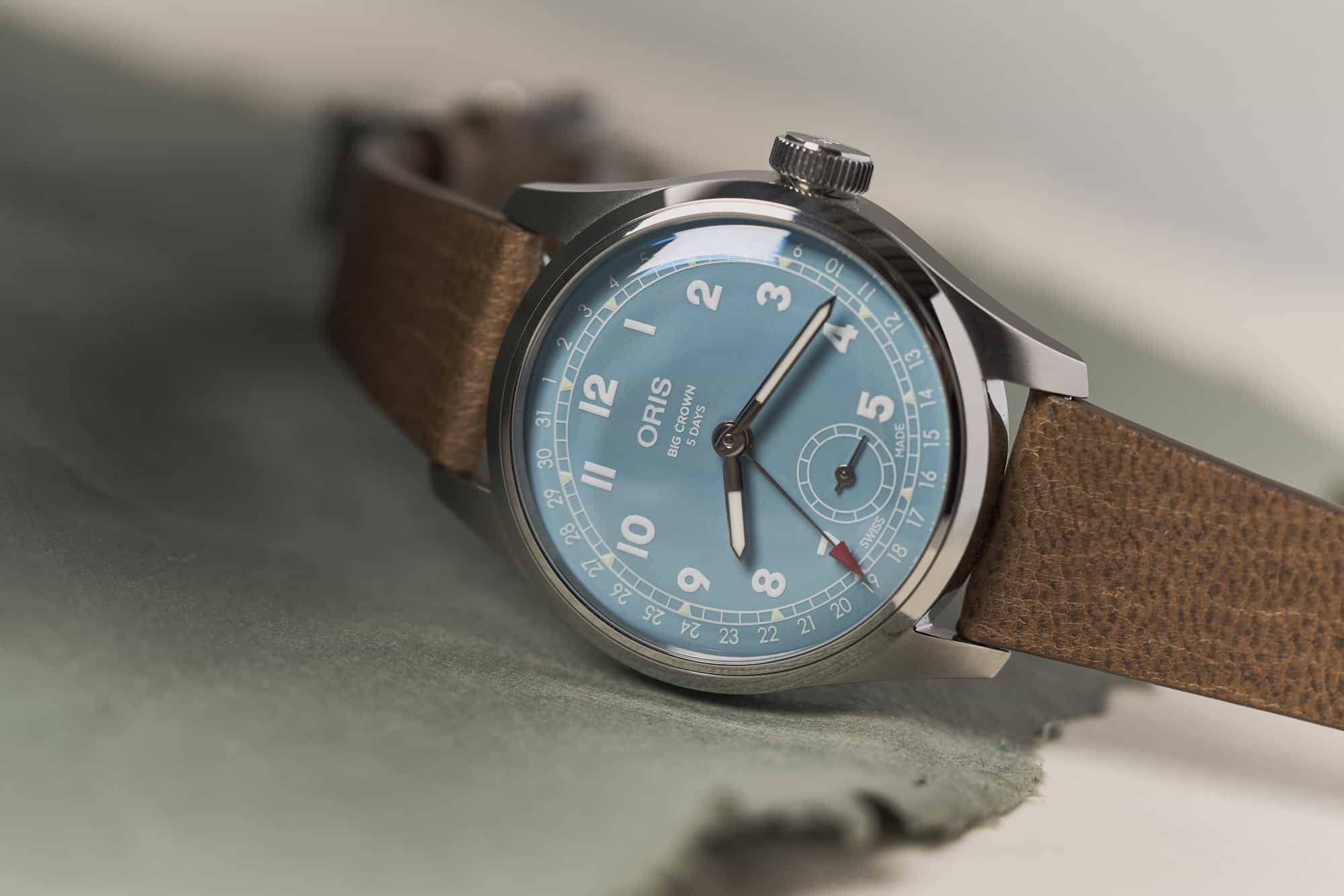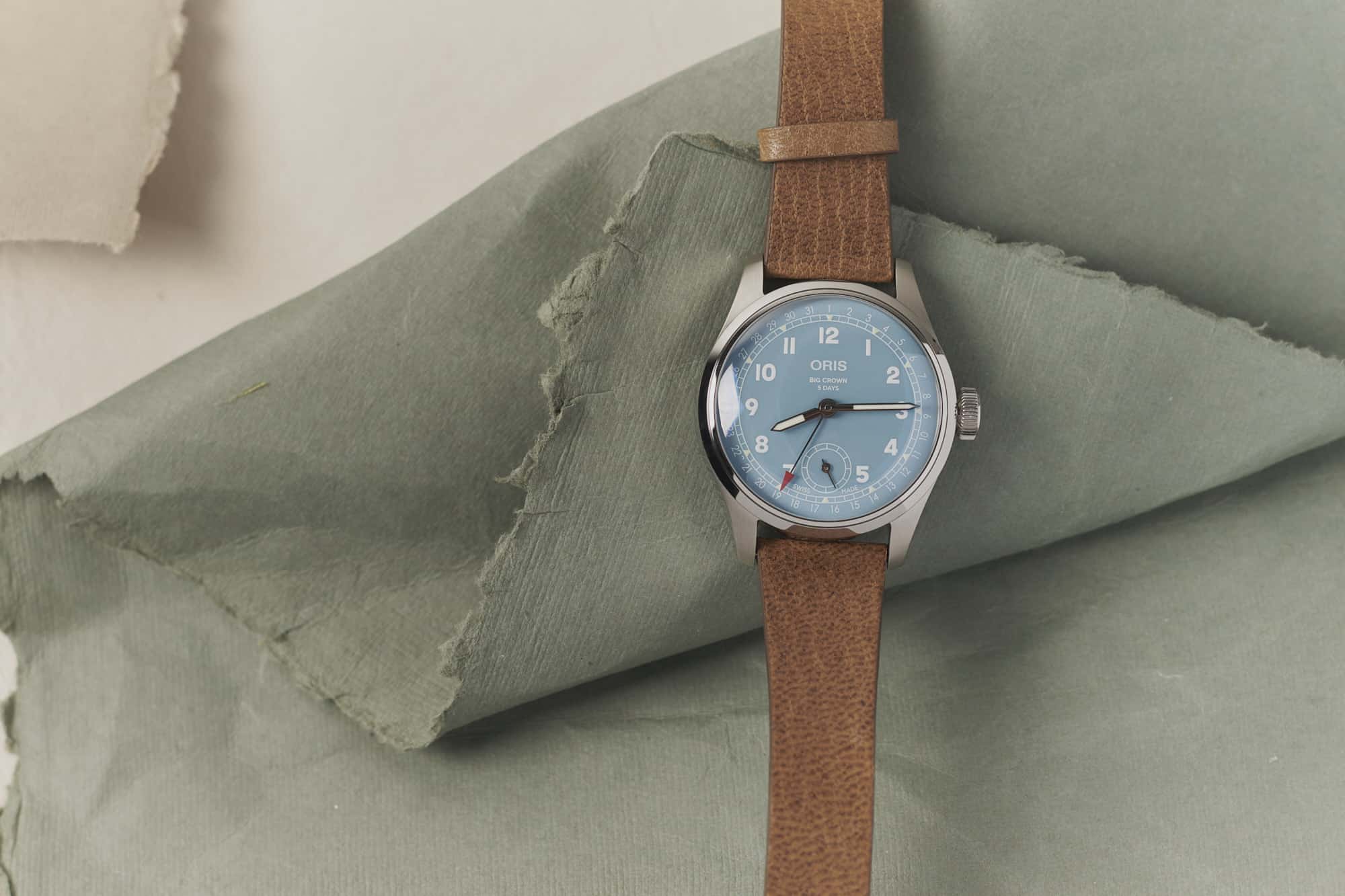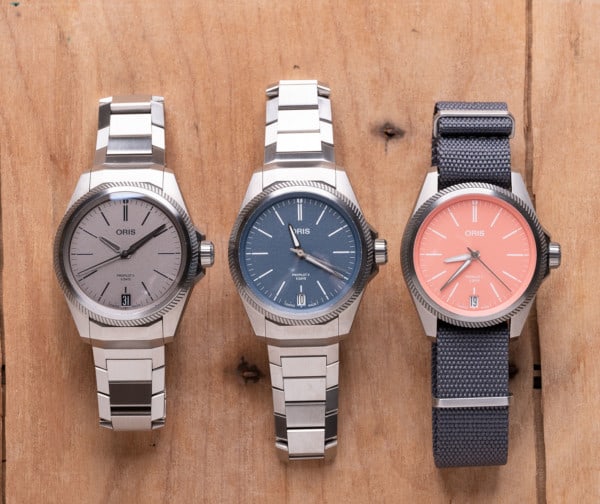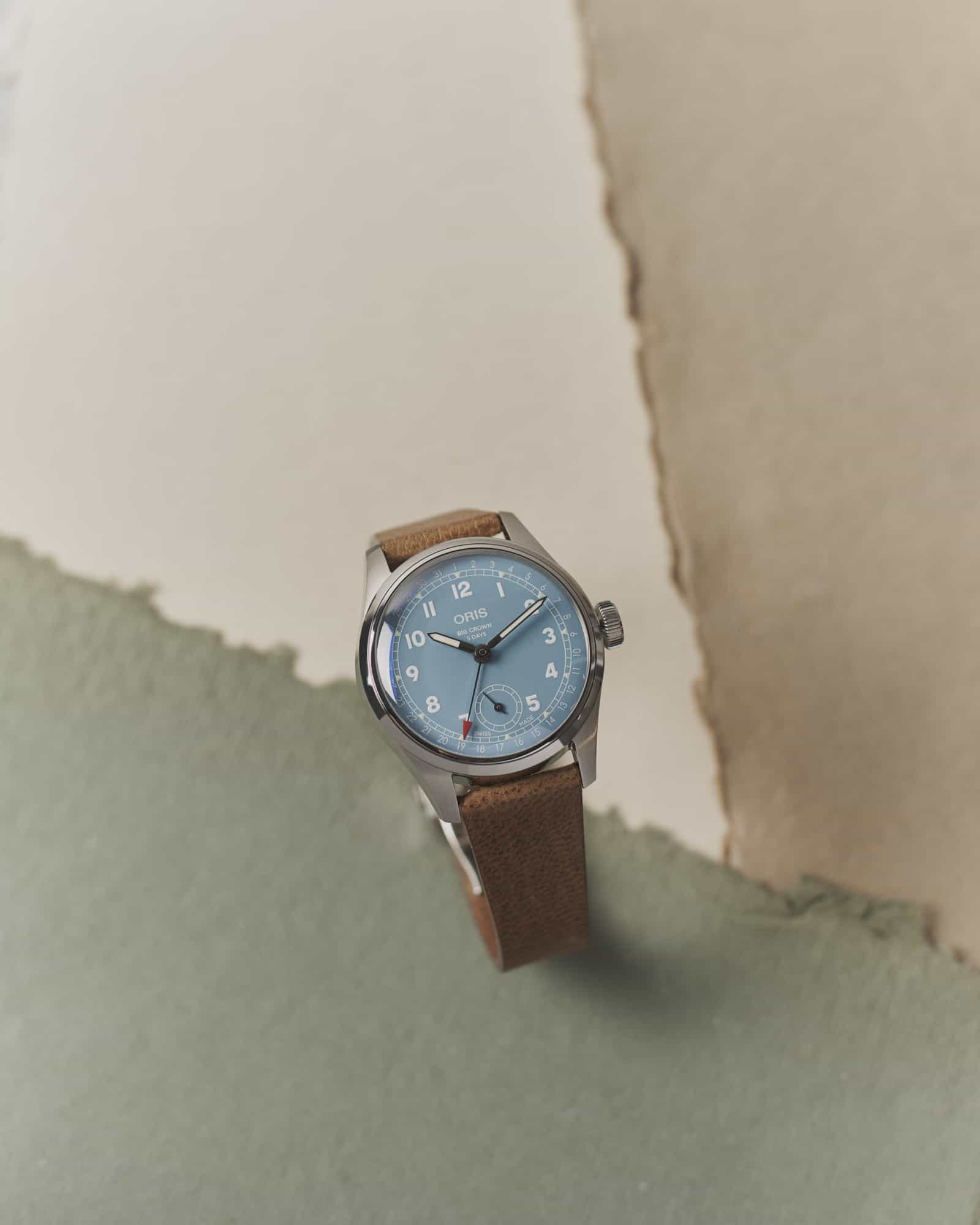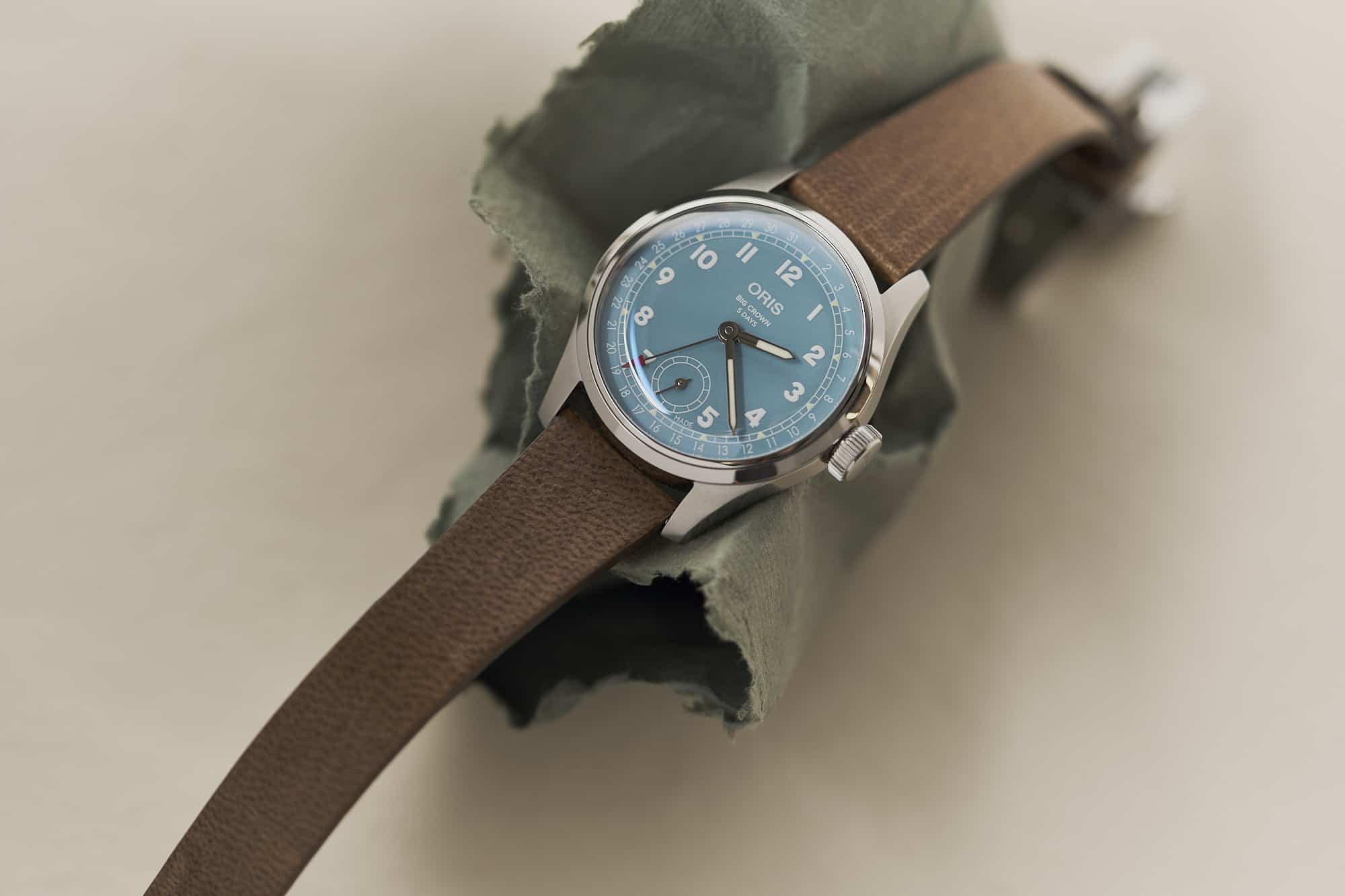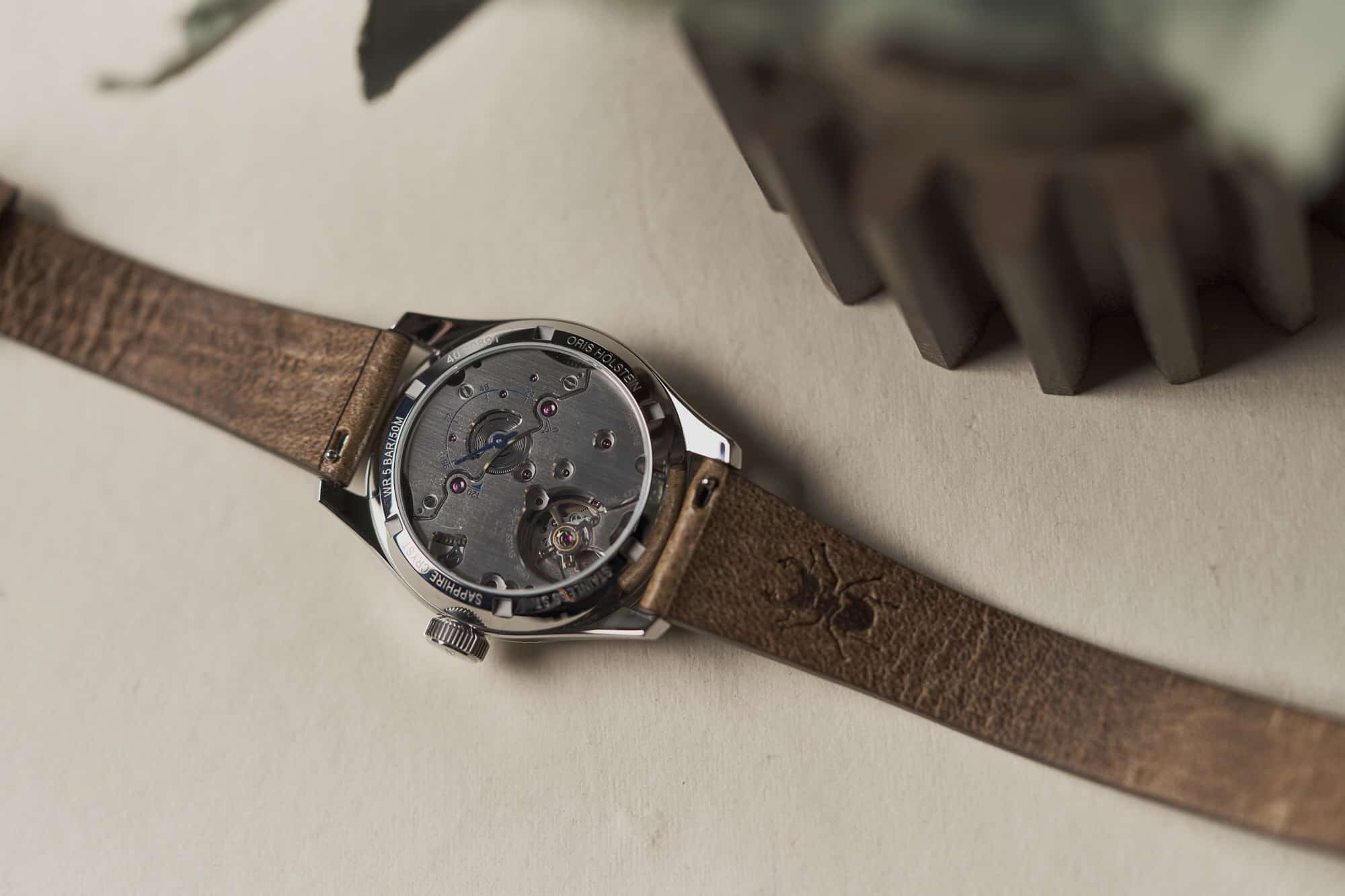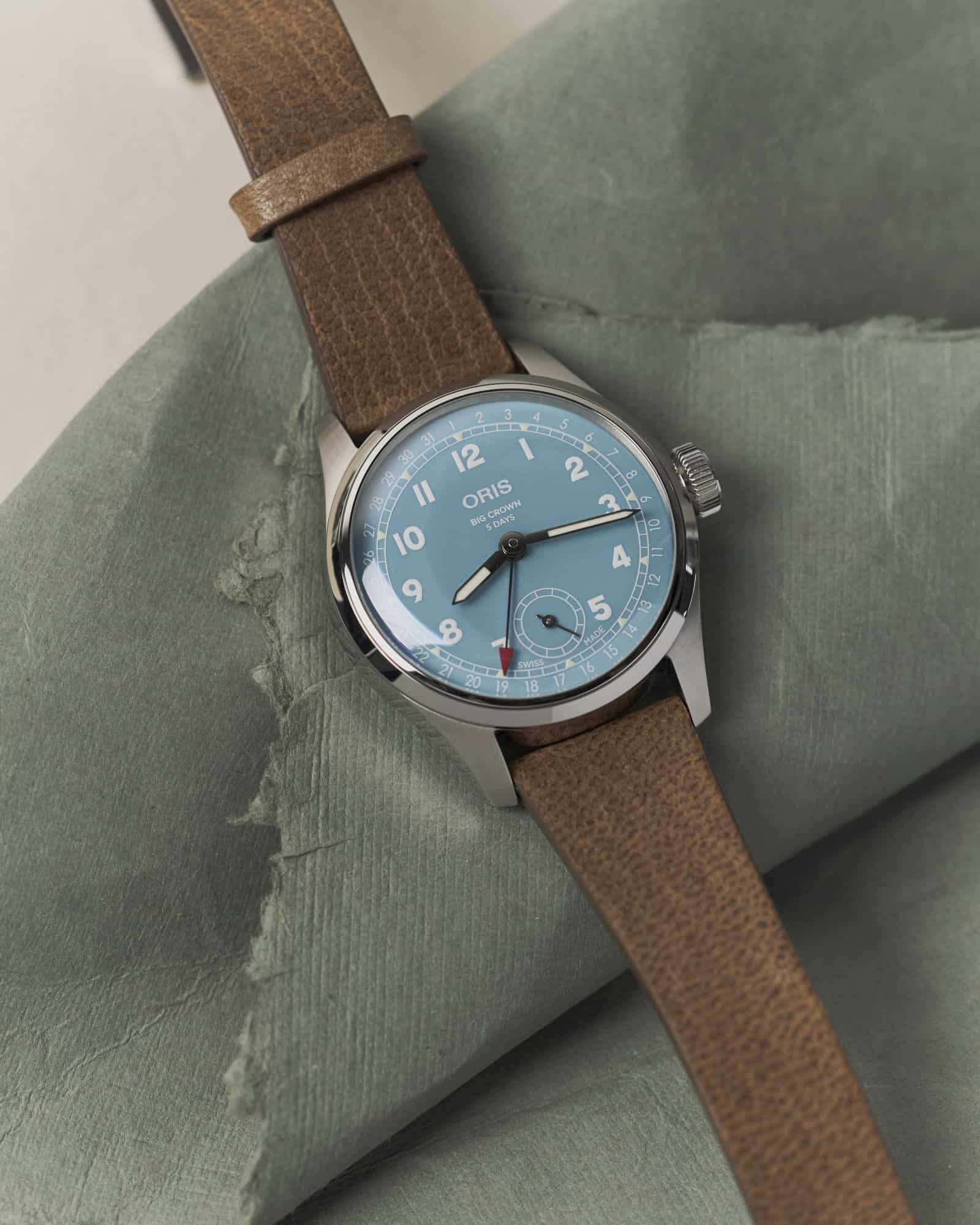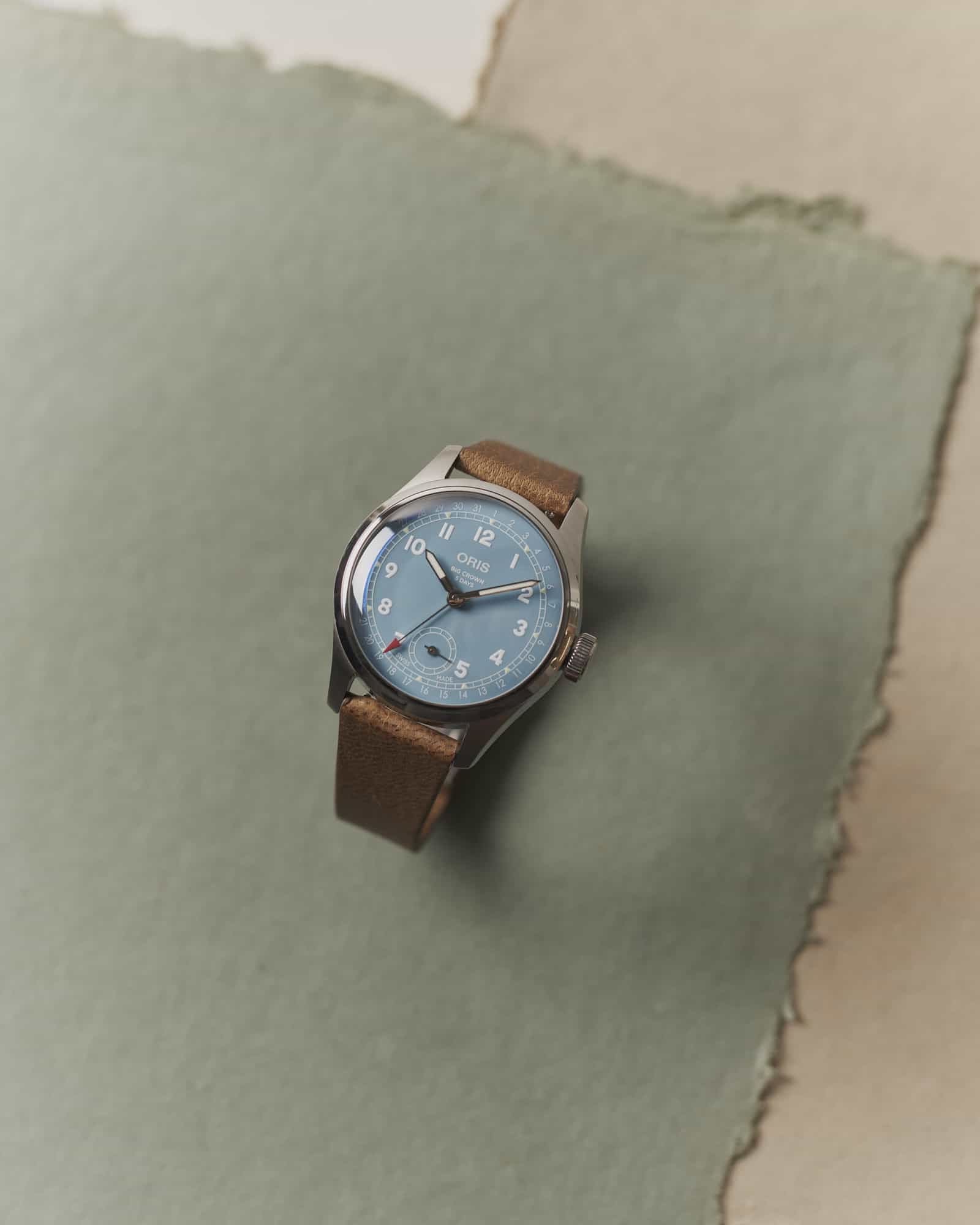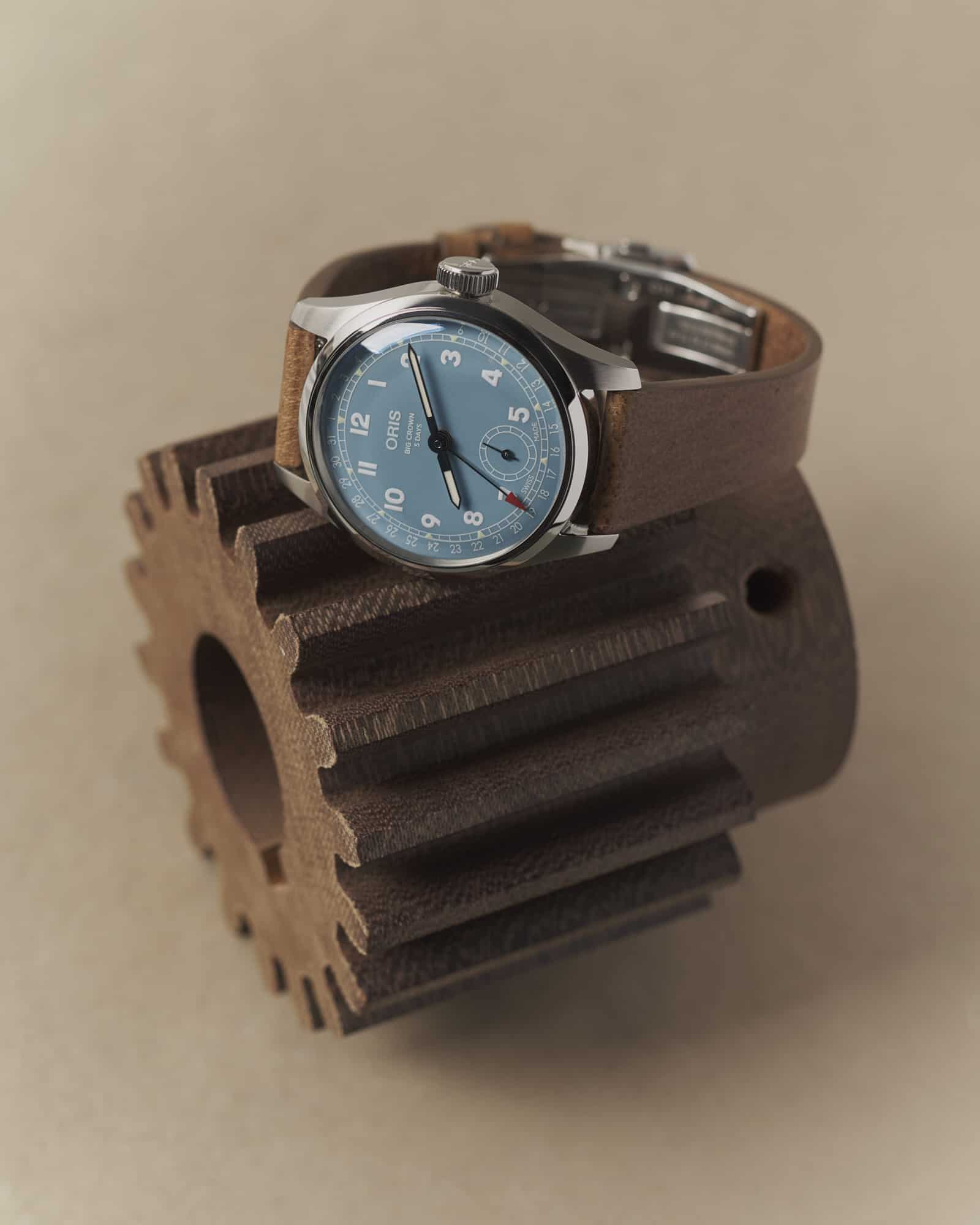It’s worth pointing out that the leather strap included with the watch, made by Cervo Volante, is very nice, and a full step or two above the usual leather straps that are included with watches around this price point. It’s soft and supple, and I happen to think it’s a great complement to the color tone of the dial. Usually, this is the point in the review where I complain about the butterfly deployant clasp, my eternal nemesis in the watch world. They always tend to be finicky, difficult to dial-in to the correct size, and excessively bulky. But I have to hand it to Oris here: the clasp is low profile enough to not add significant heft or bulk to the watch when worn while still feeling solidly made. If I owned the watch, I’d still swap it out for a simple pin buckle in a heartbeat, but this clasp didn’t fill me with rage as most of this variety inevitably do.
The Big Crown Calibre 473 is quintessentially Oris – a true signature watch – in a number of ways. It puts a spotlight not only on a complication and style of watch that Oris really specializes in, but it highlights their movement making capabilities that have honestly been somewhat underreported over the last decade. Oris is primarily known as a maker of rock solid, value driven mechanical watches with off-the-shelf Sellita calibers that have been lightly modified. There’s nothing wrong with that, of course, but it only tells part of the story. The 100 series movements released over the course of the last ten years have proven to be something of a warm up act for the 400 series calibers, which are genuinely impressive in their performance and speak to the brand’s resourcefulness as well as their long view of their place in the industry. Oris has obviously been around for well over one hundred years, so it’s not like they’re going anywhere, but that ten year service interval and warranty on the new calibers is a real flex.
The retail price of the Big Crown Calibre 473 is $4,400, a figure that many in the watch enthusiast community will surely immediately bristle at. There’s no getting around that this is a big chunk of money, but I think when you stack this movement up spec for spec with watches at a comparable price point from brands like Tudor, the price doesn’t seem unreasonable. I sense that the issue most who object to the price have is that Oris offers a very similar watch in appearance and function for considerably less, but powered with a Sellita movement. The delta between the two price points is enough to cause most consumers to really reflect on what it is that they want out of a watch for the money they’re spending, and I imagine most Calibre 400 series customers are serious collectors of the hardcore movement nerd variety.
![]()
There’s a bit of a paradox there, because after spending some time with the watch, I actually think it’s ideally suited to a new collector, or someone with a single watch, or a very small collection. I mean this in the best possible way, but the wearing experience is one I’d describe as completely neutral. You know you are wearing a nice watch when you strap on the Calibre 473, but it’s not a deeply unusual horological statement, or even particularly exciting. And yet it offers just enough by way of the movement to perhaps get someone interested in learning more about watchmaking. I can imagine someone getting sucked down the rabbit hole via this watch fairly easily, but it’s also the kind of watch that could just be worn day in and day out by someone who simply wants something nice for the office and his or her day to day life.
The challenge for Oris, I think, will be convincing people who are hesitant about the jump in price that the Calibre 473 offers real value. But that’s always the challenge for watch brands, or any company for that matter. Getting people to spend more money on a thing than they did before for that same thing is kind of what all business is built on. Looking back at some of the previous watches in Oris’s Movement Creation Program is a reminder that when it comes to the Calibre 400 series of movements, we’re still in the early days. As those movements age, and Oris promises they’ll age gracefully, it will almost certainly be easier for people to jump into the brand at a higher price point. Until then, the early adopters have a very solid watch in the Calibre 473. Oris









 Featured Videos
Featured Videos




